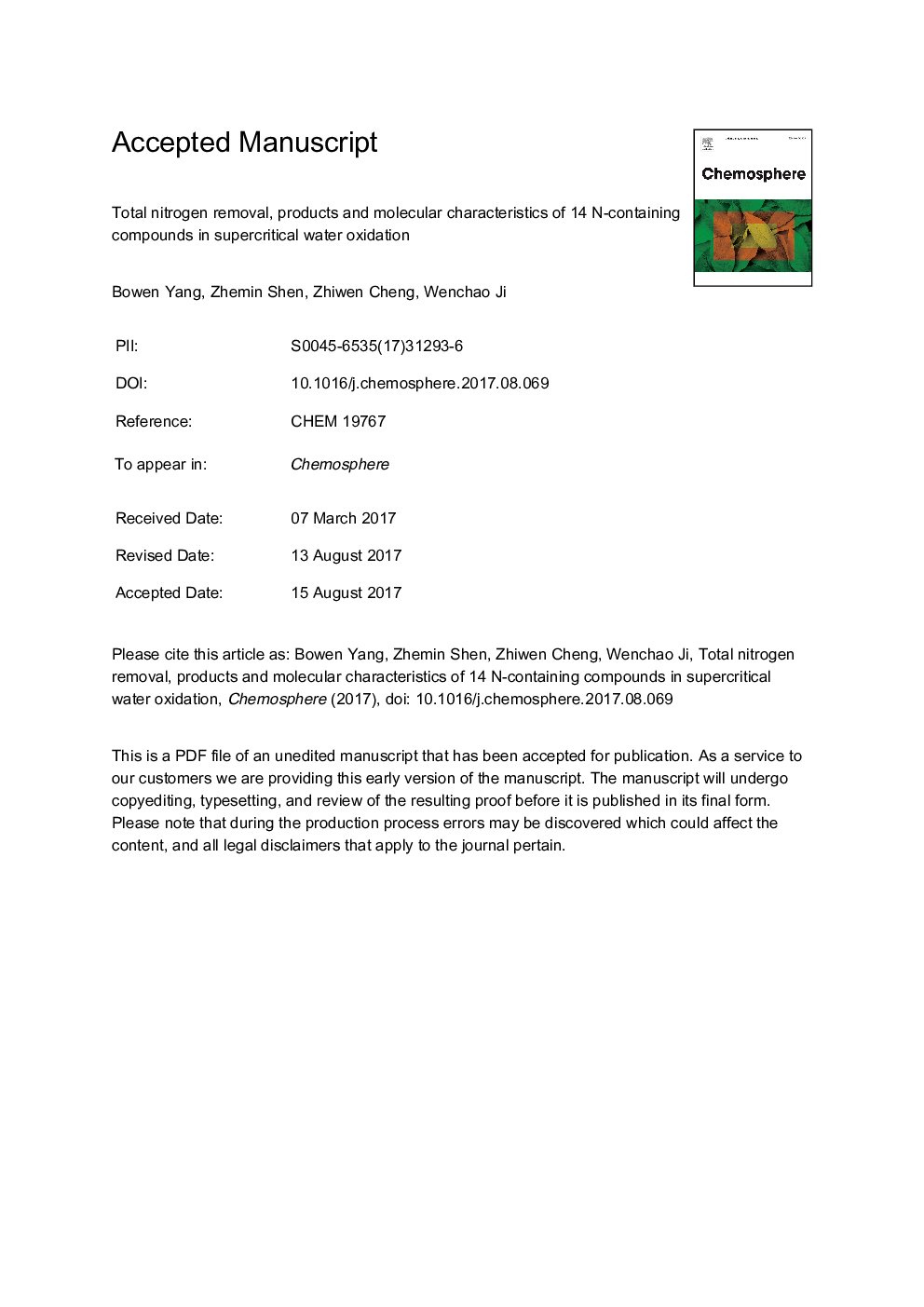| Article ID | Journal | Published Year | Pages | File Type |
|---|---|---|---|---|
| 8852991 | Chemosphere | 2017 | 33 Pages |
Abstract
Supercritical water oxidation (SCWO) process of 14 N-containing compounds was investigated with residence time of 150 s, at a stable pressure of 24 MPa, temperatures of 350-500 °C and 500% excess oxygen, resulted in total nitrogen (TN) removal from 41 to 96%. The products of N-containing species were mainly N2, nitrate, ammonium, as well as hardly nitrite or NOX. The yield distributions of nitrate and ammonium were different: the main nitrate concentrations were obtained from the compounds containing nitro-group and diazonium, like nitrobenzene, 2-nitrophenol and eriochrome blue black R (EBBR); the predominant ammonium yields were achieved from amino-group and N-heterocyclic compounds, such as aniline, 5-chloro-2-methylaniline, 3,4-dichloroaniline, 1-methylimidazole, 1,10-phenanthroline, cyanuric acid, indole and 2,3-indolinedione. It is interesting that 2-nitroaniline, possessing both nitro- and amino-group, would dominantly decompose into N2. To explore the relationship between TN removal and molecular structural characteristics, density functional theory (DFT) method was used to calculate molecular descriptors of all 14 N-containing compounds. The correlation results showed that among all the fifteen molecular descriptors, q(C)-, q(C-H)+ and F(0)x greatly affects temperature behavior of TN removal.
Related Topics
Life Sciences
Environmental Science
Environmental Chemistry
Authors
Bowen Yang, Zhemin Shen, Zhiwen Cheng, Wenchao Ji,
